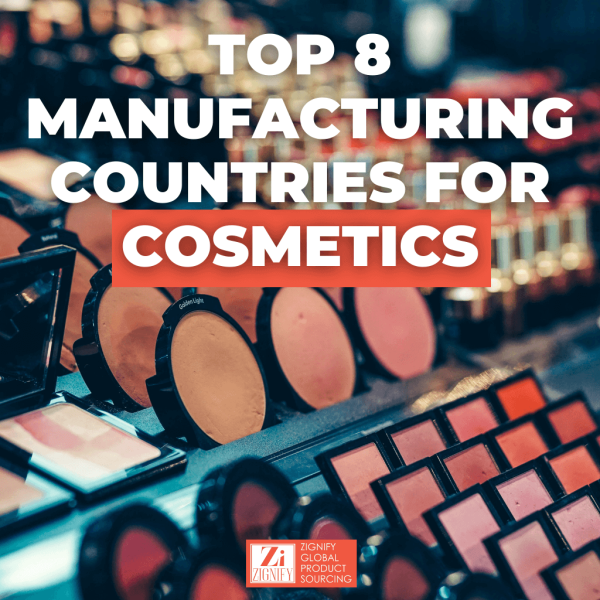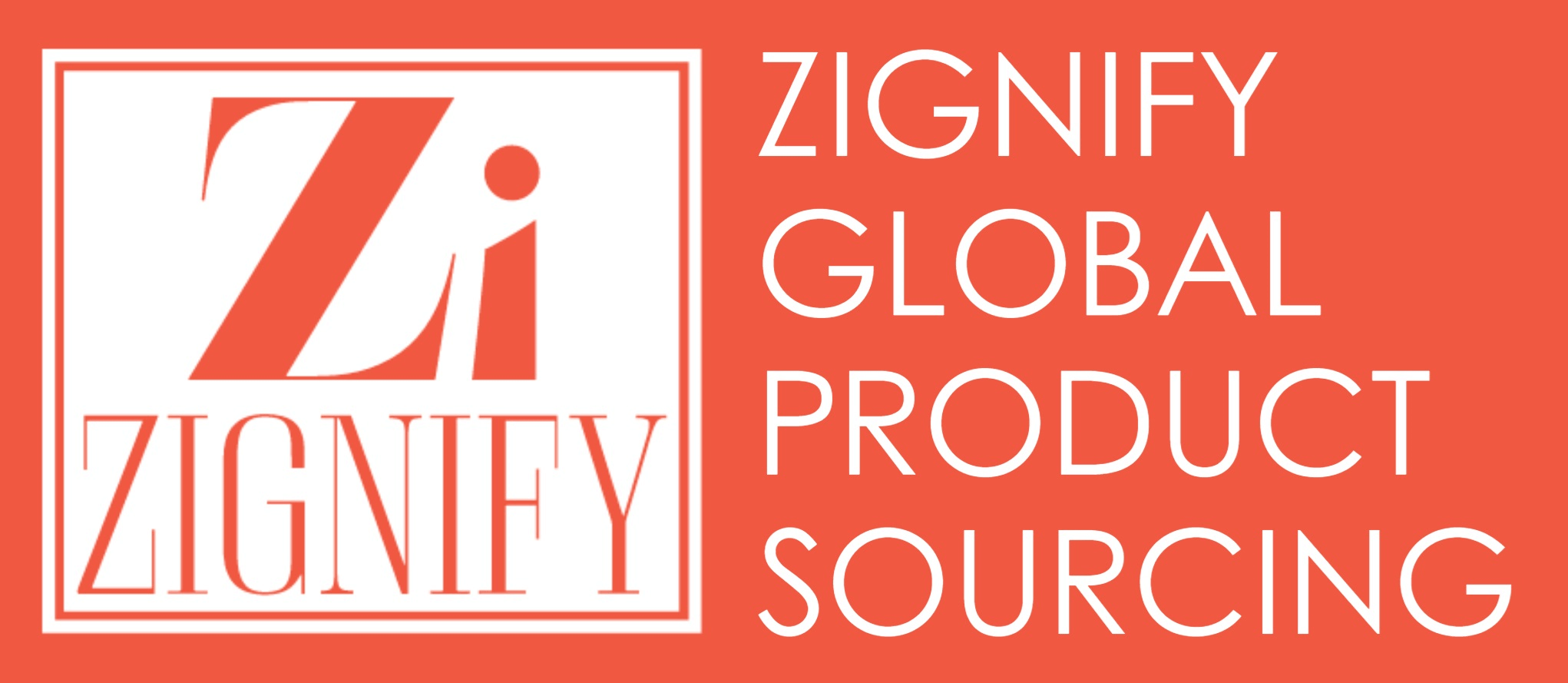
Planning to launch a beauty brand or scale up your cosmetics production in 2025? Choosing the right country to manufacture your products is one of the most important decisions you’ll make. The location you pick can impact everything—from product quality and innovation to cost-efficiency and speed to market.
With the global cosmetics market projected to soar to nearly $129 billion by 2028, more brands are exploring international manufacturing options than ever before. In this comprehensive guide, we reveal the best countries for cosmetics manufacturing in 2025, uncovering their unique strengths, market trends, and why they’re ideal for growing a successful beauty business on a global scale.
best countries for cosmetics manufacturing
1. France
When you think of beauty and luxury, France is probably the first place that comes to mind. After all, it’s home to the biggest names in the cosmetics world, including L’Oréal, the brand behind the flawless looks of celebrities like Kim Kardashian. And let’s be real, if Kim’s face is covered in it, it’s bound to be a must-have, right?
The “Made in France” label isn’t just a tagline—it’s a stamp of high quality that resonates around the globe.
France has long been the epicenter of beauty, with a rich heritage in cosmetics and luxury skincare. In 2023, the country generated a whopping $12 billion in exports, accounting for 16.4% of the global beauty market. That’s serious business. By 2024, the revenue in France’s cosmetics market is projected to reach an impressive $2.81 billion.
Top brands like L’Oréal, Chanel, and Dior call France home, and they’re known for their dedication to high-quality formulations and smart, innovative marketing. France’s legacy in beauty continues to attract consumers worldwide, keeping it at the forefront of both production and export.
Why France?
- Heritage and expertise: The “Made in France” label carries significant weight, often associated with high quality and sophistication. Brands like Chanel, L’Oréal, and Lancôme exemplify this legacy, attracting consumers who value heritage and craftsmanship.
- Luxury production: If you’re aiming to position your brand in the high-end market, French manufacturers can provide that level of luxury and craftsmanship.
- Strict regulations: The EU’s cosmetics regulations are some of the strictest in the world, ensuring that products meet high safety and quality standards. These regulations help maintain high-quality standards, fostering consumer trust. Compliance with these guidelines can also facilitate easier entry into other European markets.
- Innovation: The country invests heavily in innovation, with numerous laboratories and research institutions dedicated to advancing cosmetic science. This focus on R&D enables manufacturers to create cutting-edge products that meet evolving consumer demands.
- Strong Export Market: France is the largest exporter of cosmetics globally, with exports valued at approximately $12 billion in 2023. This robust export market allows manufacturers to reach a wide audience, capitalizing on the global demand for French beauty products.
- Skilled workforce: The country boasts a highly skilled workforce trained in various aspects of cosmetic production, from formulation to marketing.
- Sustainability Initiatives: French brands are increasingly focusing on sustainability, appealing to environmentally conscious consumers.
Challenges:
- High manufacturing costs: While French cosmetics are synonymous with luxury, manufacturing costs, including labor, are significantly higher than in many other countries.
- Strict regulations: The European Union has rigorous regulatory requirements for cosmetics, which can delay production and increase compliance costs.
- Regulatory Complexity: Navigating EU regulations can be complex for newcomers without prior experience.
- Intense Competition: The market is saturated with both established brands and emerging players, making differentiation crucial.
- Smaller batch sizes: Many French manufacturers specialize in premium, small-batch production, which may not suit brands looking for large-scale manufacturing.
2. South Korea
You must be living under a rock if you haven’t noticed the hype around K-beauty products! Whether it’s the famous 5-step (or even 10-step!) skincare routines all over social media or the flawless skin of K-pop idols and K-drama stars, Korean beauty has taken the world by storm. It’s no surprise that these celebrities, with their massive followings, have played a huge role in skyrocketing the popularity of K-beauty.
South Korea has truly become a powerhouse in the cosmetics world, known for its innovative skincare trends and products. In 2023 alone, South Korea exported around $7.2 billion worth of cosmetics, making up 9.8% of the global total. And it’s not slowing down—the Beauty & Personal Care market in South Korea is set to grow by 2.24% annually from 2024 to 2029. The biggest chunk of this market? Skincare, which is expected to hit a whopping $9.24 billion in 2024.
Brands like Amorepacific and Innisfree are leading the charge, combining cutting-edge technology with natural ingredients to create products that really deliver. With its strong focus on research and development, South Korea is way ahead when it comes to cosmetic innovation.
Why South Korea?
- Innovation: Korean manufacturers are known for cutting-edge R&D, leading to breakthroughs like BB creams, cushion compacts, and sheet masks.>
- Quality: South Korean factories are highly regulated, ensuring that products meet strict safety and quality standards.
- Trendy products: The country is a leader in setting beauty trends, making it ideal for brands that want to be at the forefront of the cosmetics industry.
Challenges:
- High competition: South Korea is highly saturated with beauty brands, both local and international, making it difficult to stand out.
- Rapidly changing trends: While K-Beauty innovations are appealing, the market moves fast. Manufacturers may pressure brands to adapt to trends, which can require significant R&D investment.>
- Cultural barriers: Language and business customs can be challenging for companies unfamiliar with South Korean business etiquette, leading to potential communication issues.
3. United States
When it comes to the beauty scene, the United States isn’t just playing in the big leagues—it’s defining them. The U.S. cosmetics market size was estimated at USD 62.97 billion in 2023 and is expected to grow at a compound annual growth rate (CAGR) of 6.1% from 2024 to 2030.
And with powerhouse brands like Estée Lauder, Procter & Gamble, and Revlon leading the charge, it’s no wonder the U.S. is a major player.
What sets the U.S. beauty industry apart? For starters, there’s a strong preference for products proudly stamped with “Made in the USA.” It’s not just a label—it’s a promise of quality. American consumers, and increasingly global ones, trust that homegrown products deliver both innovation and reliability.
And let’s talk about California. This state isn’t just famous for Hollywood and sunshine—it’s the beauty industry’s very own playground. California has become a hotbed for cosmetic manufacturing, with iconic beauty brands and indie darlings alike setting up shop in the Golden State. From groundbreaking formulations to sustainable practices, the West Coast is where beauty trends are born.
So, whether it’s a cult-favorite highlighter from LA or a skincare serum with a loyal New York following, the U.S. continues to shine as a key player in the world of beauty—mixing local pride with global influence.
Why the U.S.?
- Quality Control: Manufacturing domestically allows companies to maintain strict quality control standards. U.S. manufacturers must adhere to FDA regulations, ensuring that products meet high safety and quality benchmarks. This oversight helps brands build trust with consumers who prioritize product safety and efficacy
- Regulatory environment: The FDA monitors cosmetics to ensure that they are safe for consumers, giving brands an added layer of credibility.
- Diverse options: From large production houses to smaller, artisanal manufacturers, the U.S. offers flexibility depending on the scale and type of cosmetics you need.
- Brand credibility: “Made in the USA” is a mark of quality that resonates with many consumers, particularly in the premium segment.
- Innovation and Expertise: U.S.-based manufacturers often possess extensive industry knowledge and expertise, enabling them to assist brands in developing innovative products tailored to local consumer preferences. This access to specialized knowledge can be invaluable for companies looking to differentiate themselves in a crowded market.
- Strong Intellectual Property Protection: The United States has robust intellectual property laws that protect brands’ innovations and formulations. This legal framework gives cosmetic companies confidence in investing in research and development, knowing that their proprietary formulas and branding will be safeguarded against infringement. This protection is crucial in an industry where brand identity and unique product offerings can significantly influence consumer choices.
Challenges:
- Competition: Intense competition from established brands can pose challenges for new companies.
- High labor costs: Labor in the U.S. is significantly more expensive than in many other countries, which can increase production costs for cosmetics.
- Regulatory hurdles: The FDA oversees cosmetics manufacturing, and though not as stringent as the EU, there are still complex regulations, time-consuming s and labeling requirements that brands must navigate.
- Limited large-scale manufacturers: While the U.S. offers diverse manufacturing options, finding large-scale facilities that can compete with Asian manufacturing capacities can be a challenge.
4. Singapore
Singapore plays a crucial role in the cosmetics supply chain, exporting about $5.5 billion worth of products (7.6% of global exports) in 2023. The country’s strategic location allows it to serve as a gateway to Asian markets while maintaining high manufacturing standards that appeal to international brands.
Why Singapore?
- Advanced R&D: Singapore is home to world-class research institutions and innovation centers, which makes it ideal for brands looking to develop cutting-edge formulations and high-tech skincare products.
- Regulatory environment: Singapore’s cosmetics industry is governed by strict regulatory standards under the Health Sciences Authority (HSA), ensuring that products meet rigorous safety and quality requirements.
- Strategic location: As a global logistics hub, Singapore offers easy access to key markets in Asia, Australia, and beyond, making it a perfect base for brands looking to distribute regionally or internationally.<
- Sustainability focus: Singapore has made significant strides in eco-friendly manufacturing, including the use of sustainable ingredients and packaging, aligning with the growing global demand for green beauty.
- Business-friendly environment: The country’s stable political climate, transparent regulatory system, and robust intellectual property protection make it an attractive destination for brands that value security and business-friendly practices.
Challenges:
- High Manufacturing Costs: Singapore’s advanced infrastructure and high labor costs result in expensive manufacturing rates. This can be a challenge for startups or brands operating on tighter budgets, especially when compared to more cost-effective production hubs in Asia.
- Limited Large-Scale Production Facilities: Due to Singapore’s global reputation for precision and safety, demand for contract manufacturers is high. Smaller or newer brands may struggle to secure production time or favorable terms with established manufacturers.
- Strict Regulatory Compliance: All cosmetics in Singapore are regulated by the Health Sciences Authority (HSA), which enforces detailed guidelines on product safety, labeling, and ingredient use. Navigating these requirements can be time-consuming and may require additional compliance expertise.
5. Germany
Germany has quietly but firmly made its mark on the global beauty scene, known for its impeccable quality and precision. The beauty and personal care products market of Germany valued USD 20.6 billion in 2023 and in the same year, the country exported around $4.7 billion worth of cosmetic products, accounting for 6.4% of global exports—a serious contribution to the beauty world. And when we talk about German beauty, we have to mention the iconic NIVEA line, part of the Beiersdorf AG empire. It’s a household name that’s been trusted for generations.
Why Germany?
- Quality assurance: German manufacturers are known for their commitment to excellence, adhering to strict EU regulations.
- Dermatological focus: Germany specializes in cosmeceuticals and dermatological products, making it a great choice for brands focusing on medical-grade skincare.
- Sustainability focus: Many German manufacturers are leading the way in sustainable cosmetics production, offering eco-friendly packaging and cruelty-free options.
Challenges:
- High operational costs: Like other European countries, Germany’s labor and operational costs are high, which can impact profit margins, especially for cost-sensitive brands.
- Strict regulations: The European Union’s regulatory framework is stringent, particularly in terms of safety testing and ingredient approval, leading to potential delays in production.
- Environmental regulations: Germany’s strong focus on sustainability can mean additional costs and procedures for meeting eco-friendly production standards, such as sustainable packaging and cruelty-free certifications.
- Limited Market Size: The domestic market is smaller compared to other countries, necessitating exports.
6. China
China might have faced its share of challenges when it comes to product safety perceptions, but it undeniably holds a prominent spot among the top players in the global cosmetics market. With exports valued at around $3.8 billion in 2023—about 5.1% of the global total—China continues to be a formidable force in beauty.
Looking ahead, the cosmetics and personal care market in China is projected to reach an astonishing $78 billion by 2025. That’s a jaw-dropping figure that underscores the country’s growing appetite for beauty products.
Why China?
- Cost-effectiveness: Chinese manufacturers offer some of the lowest production costs in the world, making it ideal for brands looking to keep their margins high.
- Mass production capacity: China’s factories can produce cosmetics at a massive scale, making it an ideal choice for global brands.
- Access to ingredients: China has a vast supply of natural and synthetic ingredients used in cosmetics, which can be sourced locally, reducing costs further.
- Growing Domestic Demand: With a population exceeding 1.4 billion, China represents one of the largest consumer markets in the world. The cosmetics sector alone is projected to reach $78 billion by 2025, driven by rising disposable incomes and a growing middle class.
- Advanced Technology: Many Chinese manufacturers utilize cutting-edge technology and automation, enhancing production efficiency and product quality.
- Integration of Traditional Practices: Many Chinese brands are successfully incorporating traditional Chinese medicine concepts into their cosmetic products, appealing to consumers interested in natural ingredients.
Challenges:
- Quality control issues: While China offers cost-effective manufacturing, quality control can be a concern if not closely monitored. Brands need to invest in proper oversight and regular inspections.
- Complex Regulations: The introduction of the Cosmetic Supervision and Administration Regulation (CSAR) has established stringent requirements for product safety, efficacy, and labeling. Companies must navigate a dual-track registration system for new ingredients and products, which can be time-consuming and costly.
- Negative perceptions: Some consumers associate Chinese-made products with lower quality, which may impact the perception of your brand, especially in markets that value luxury.
- Increasing Labor Costs: Although China was once known for its low labor costs, these have been rising steadily. This trend is prompting some manufacturers to consider relocating to other countries with cheaper labor markets.
- IP protection: Intellectual property (IP) protection can be a challenge in China, with the risk of product designs or formulas being copied by competitors.
- Market competition: The cosmetics market in China is highly competitive, with numerous brands vying for consumer attention. This saturation makes it challenging for new entrants to establish themselves and gain market share.
Read more on 31 Terms You Ought to Know When Sourcing from China
7. Japan
Japan has carved out a stellar reputation in the beauty world, celebrated for its innovative approach to skincare that seamlessly blends traditional ingredients with cutting-edge technology. The J-Beauty trend has surged in popularity, emphasizing a minimalist approach that focuses on the essentials—think fewer steps but maximum impact. For the Japanese, maintaining a beauty routine isn’t just a ritual; it’s a way of life, with many people following their skincare regimens religiously.
When it comes to spending, Japanese consumers are at the top of the game, investing significantly in cosmetics, particularly skincare products. In 2023, the export value of cosmetics from Japan amounted to around 646 billion Japanese yen. But the country’s influence far exceeds its export figures. Brands like Shiseido are not only household names but also trendsetters that shape global beauty standards.
Why Japan?
- Cutting-edge technology: Japan leads the way in scientific advancements in skincare, particularly in anti-ageing and whitening products.
- High-quality standards: Japanese consumers are known for being very particular about the quality of their products, which has pushed manufacturers to adhere to stringent quality controls.>
- Unique formulations: Japanese manufacturers are experts in blending traditional ingredients like green tea and rice with modern skincare science.
Challenges:
- High production costs: Japan is known for its meticulous attention to quality, but this comes at a price. Manufacturing costs can be higher compared to other Asian countries.>
- Slow production timelines: Japanese manufacturers prioritize precision, which can lead to slower production times. Brands with tight timelines may find this challenging.
- Language barriers: Communication issues can arise for brands not familiar with Japanese, which may complicate negotiations and product specifications.
8. Italy
When you think of luxury and style, Italy instantly comes to mind. In 2023, the Italian cosmetics sector is riding high, boasting an impressive annual turnover of $11.9 billion. According to the Cosmetics Italy report, the country ranks as the fourth-largest producer in Europe and the ninth-largest worldwide.
The phrase “Made in Italy” has long been a hallmark of quality, captivating consumers across the globe. So, why does “Made in Italy” resonate so deeply? Well, as Cosmetica Italia reveals, a staggering 67% of the makeup consumed in Europe is crafted by Italian companies, and that number dips only slightly to 55% on a global scale.
For those in search of premium beauty products that embody elegance and sophistication, Italian brands offer an irresistible allure, blending tradition with innovation in every tube and bottle.
Why Italy?
- High-Quality Standards: Italy is known for its stringent regulations and quality control measures in cosmetic manufacturing. The country adheres to strict EU regulations, ensuring that products meet high safety and efficacy standards.
- Strong Export Market: The Italian cosmetics industry has shown remarkable growth, with exports accounting for 46% of total turnover in 2023. This robust export market provides manufacturers with a vast consumer base.
- Innovative Formulations: Many Italian companies invest heavily in creating unique formulations, often utilizing natural ingredients sourced locally.
- Luxurious Packaging: Italian manufacturers offer top-tier, customizable packaging, enhancing the product’s visual appeal.
- Skilled Workforce: Italy boasts a highly skilled workforce with expertise in various aspects of cosmetic production, from formulation to packaging.
- Sustainability Practices: Many Italian brands prioritize sustainability by using eco-friendly practices and materials, appealing to environmentally conscious consumers.
- Luxurious Packaging: Italian manufacturers offer top-tier, customizable packaging, enhancing the product’s visual appeal.
Challenges
- High Costs: Italy’s labor, operations, and raw material costs are higher compared to countries like China or India.
- Economic Instability: Italy’s economic volatility can impact labor costs and long-term business planning.
- Limited Large-Scale Production: Italian manufacturers specialize in smaller batches, which can be challenging for brands seeking mass production.
- Intense Competition: The Italian cosmetics market is saturated with both established brands and new entrants. This competition can make it challenging for smaller or emerging brands to gain market share and visibility without significant marketing investments.
- Regulatory Complexity: While the strict regulatory environment ensures high-quality products, it can also pose challenges for manufacturers unfamiliar with EU regulations. Navigating these requirements can be time-consuming and may require specialized legal expertise.
- Dependence on Imported Raw Materials: Italy imports a significant portion of its cosmetic ingredients, which can lead to supply chain vulnerabilities. Fluctuations in raw material availability or prices can impact production timelines and costs.
Want to learn more about cosmetic product sourcing? Book your free consultation now here and let our experts guide you every step of the way!
Partner with Zignify Global Product Sourcing for Your Manufacturing Needs!
If you’re ready to step into the world of cosmetics and beauty, Zignify Global Product Sourcing is your go-to global sourcing company! We specialize in connecting you with the right manufacturers, ensuring you get the best deals through expert negotiations on your behalf.
Our commitment doesn’t stop there—we also provide thorough quality control inspections, so you can rest easy knowing your products are top-notch before they arrive at your doorstep. From start to finish you are guaranteed of comprehensive product sourcing services.
Whether you’re looking to tap into the innovative beauty landscape of Germany, the manufacturing prowess of China, the luxurious craftsmanship of Italy, or the trendsetting vibes of South Korea, we’ve got you covered.
You dream it, we source it for you! Let’s connect now and embark on your journey to creating exceptional products. Reach out today, and let’s make your vision a reality!
Frequently Asked Question on Cosmetic Manufacturer
- Which country is the largest exporter of cosmetics?
France is the largest exporter of cosmetics globally, with exports valued at approximately $13.1 billion in 2023. - What makes South Korea a leader in the beauty industry?
South Korea, known for its K-Beauty products, leads the beauty industry due to its innovative skincare trends, extensive research and development, and the global popularity of its beauty routines and products. - Why is ‘Made in Italy’ significant in cosmetics?
The “Made in Italy” label signifies high-quality and luxurious craftsmanship in cosmetics, with Italy being a major producer, especially in makeup products. - How does the United States contribute to the global beauty industry?
The United States hosts major cosmetics companies like Estée Lauder and Procter & Gamble, contributing significantly to global beauty trends and innovations. - What are the challenges of manufacturing cosmetics in China?
Manufacturing cosmetics in China offers cost advantages but presents challenges such as quality control issues, complex regulations, and concerns about intellectual property protection. - Why is Singapore considered a strategic location for cosmetics manufacturing?
Singapore serves as a global logistics hub with advanced research institutions, making it ideal for brands aiming to distribute regionally or internationally while maintaining high manufacturing standards. - What is MOQ in cosmetics manufacturing?
Minimum Order Quantity (MOQ) refers to the smallest number of units a manufacturer is willing to produce in a single order. In the cosmetics industry, MOQs can vary significantly based on factors like product type, customization level, and manufacturer capabilities.




